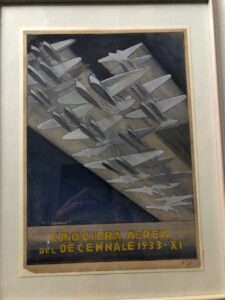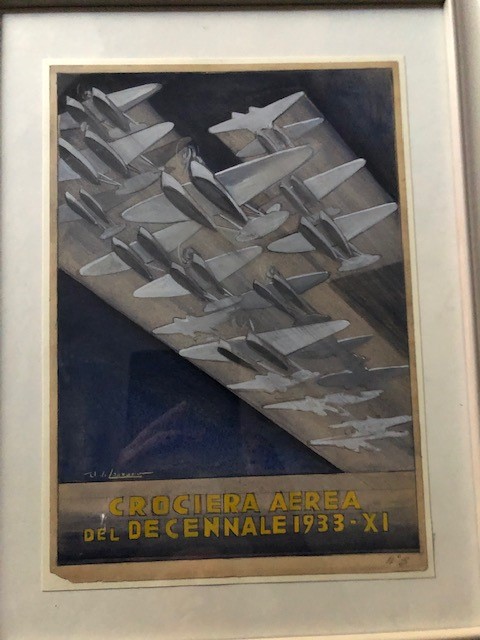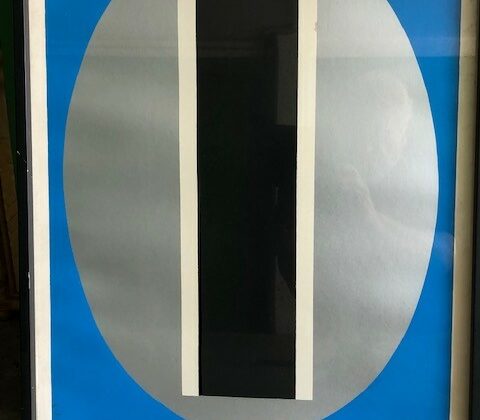Umberto Di Lazzaro, trans – Atlantic seaplanes
Prof. Francesco Carelli
University of Milan

There are artists for whom it becomes almost a challenge to understand who they were and in what sphere they worked. Among these “impossible cases” it also falls Umberto Di Lazzaro, active designer for just over a decade, at the turn of the twenties and thirties, with a well – known production of posters, only. This despite the fact that there is no publication or exhibition that deals with aeropainting that does not mention him. His first known poster is the one made for Coppa Bonmartini in 1926.
Di Lazzaro will never be counted among the aeropainters, in fact he will never participate in any exhibition dedicated to futurism. He maintains a technical training where the taste for the detail of the plane prevails over the compositional imagination, as if he could not make that fourth point of the aerobrushing manifesto:
“Painting this new reality from above imposes a profound contempt for detail and a need to synthesize and transfigure everything”. He was not so much interested in a transfigured vision of the world seen from above but rather the stain to reach that goal.
He let himself be carried away more by his passion for aeronautics and regime propaganda than by joining an artistic movement that he probably felt stranger.
Of 1931 is the poster Trasvolata Italia-Brasile with protagonist Italo Balbo and of 1933 are the posters Trasvolata atlantica del Decennale – also this feat accomplished by Balbo starting from the Italian capital and reaching New York on patrol with 25 seaplanes, where the descriptive character prevails over the imagination. A clear return to aeropainting is the rare original postcard, printed on the occasion of the mentioned undertaking. The postcard illustrates with a futuristic trait the arrival of the Atlanteans in New York on 19th July 1933. Also in the last known poster, Umberto di Lazzaro tries to go back to the lesson of the Futurist masters. Linee Aeree Italiane, with two stylized planes, one red and one white, the y cross in flight one during take – off and one on landing and both have the same roaring wakes in a world that runs, or rather flies at supersonic speed.



